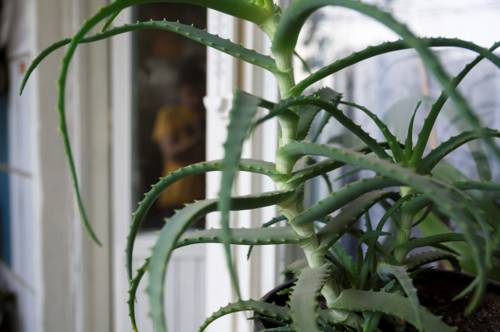
FAQ About Indoor Plant Thermal Acclimatization

What is thermal acclimatization in indoor plants?
Thermal acclimatization in indoor plants refers to the process by which plants adjust their physiological processes to cope with changes in temperature. This adaptation enables them to maintain optimal growth and survival in varying indoor temperature conditions.

Why is thermal acclimatization important for indoor plants?
Thermal acclimatization is crucial for indoor plants because it helps them survive and thrive in environments where temperature fluctuations are common. By adjusting to temperature changes, plants can optimize their metabolic activities, reducing stress and enhancing growth.

How do indoor plants acclimatize to changes in temperature?
Indoor plants acclimatize by altering physiological processes such as photosynthesis, respiration, and cellular membrane stability. They may adjust the structure of their leaves, modify enzyme activities, and optimize water usage to better manage energy and withstand temperature-induced stress.

What are common signs that an indoor plant is not acclimatizing well to temperature changes?
Common signs include wilting, yellowing of leaves, stunted growth, and dropping leaves. These symptoms indicate that the plant is under stress and may not be adapting effectively to temperature variations.

Can all indoor plants acclimatize to the same temperature ranges?
No, different species of indoor plants have varying sensitivities and capacities for thermal acclimatization. Some plants may tolerate a broad range of temperatures, while others may require more stable conditions to acclimatize effectively.

How long does it typically take for an indoor plant to acclimatize to a new temperature?
The acclimatization period varies depending on the species and the extent of the temperature change. It can take from a few days to several weeks for a plant to fully adjust to a new temperature setting.

What practices can help indoor plants acclimatize to new temperature settings effectively?
To help indoor plants acclimatize, gradually introduce them to the new temperature by adjusting the room temperature incrementally. Ensure they are properly watered and positioned in optimal lighting. Reducing sudden changes in humidity and temperature can also aid in acclimatization.

What role does humidity play in the thermal acclimatization of indoor plants?
Humidity plays a significant role in indoor plant acclimatization as it affects water loss through transpiration. Maintaining appropriate humidity levels can help plants balance water retention and reduce stress during temperature changes, facilitating smoother acclimatization.

What temperature ranges are generally ideal for the acclimatization of most indoor plants?
While specific ideal temperatures vary among plant species, most indoor plants thrive in temperatures ranging from 65°F to 75°F (18°C to 24°C). Consistent temperatures within this range provide a conducive environment for acclimatization.

Are there particular indoor plants that are better at acclimatizing to temperature changes?
Certain plants like succulents and spider plants are more adaptable to temperature changes due to their inherent physiological characteristics. These plants typically require less stringent environmental controls and can thrive with varying temperature conditions.

Can moving indoor plants to different rooms affect their acclimatization process?
Yes, moving indoor plants to different rooms with distinct temperature and humidity levels can impact their acclimatization process. It’s essential to transition them gradually to minimize stress and give them time to adjust to the new environment.

What might happen if an indoor plant fails to acclimatize to thermal changes?
If an indoor plant fails to acclimatize, it may suffer from stress-related conditions such as leaf burn, wilting, and reduced growth. In extreme cases, it could lead to the plant's decline or death if the environmental conditions are not corrected.

How does thermal acclimatization affect the energy use in indoor plants?
During thermal acclimatization, plants adjust their energy usage to maintain crucial functions such as photosynthesis and respiration. Plants may alter the allocation of energy to different physiological processes to better withstand temperature fluctuations.

Can artificial lighting influence the thermal acclimatization of indoor plants?
Yes, artificial lighting can influence acclimatization by providing consistent light conditions that help stabilize temperature. Proper lighting can support photosynthesis, promoting overall plant health and aiding thermal acclimatization.

Is it possible to reverse thermal acclimatization in indoor plants?
Reversing thermal acclimatization can be challenging as it involves reintroducing plants to the original temperature conditions slowly. Rapid changes back to old conditions can stress plants further. A gradual process that involves adjusting environmental factors is recommended.

Do large temperature swings over the day affect indoor plant acclimatization?
Yes, large temperature swings can cause stress and affect the acclimatization process. It is important to maintain a more stable temperature range to help plants gradually acclimate without experiencing shock or undue stress.

How does cellular membrane stability relate to thermal acclimatization in plants?
Cellular membrane stability is crucial for thermal acclimatization as it preserves cell integrity and function during temperature changes. Plants might adjust membrane composition to enhance fluidity and protect cells in different thermal conditions.

What environmental factors other than temperature should be considered for acclimatization?
Besides temperature, factors such as light intensity, humidity, and soil moisture should be considered for effective acclimatization. Each of these elements plays a role in plant metabolism and health, facilitating smoother adaptation to new environments.

Can acclimatization affect the flowering and fruiting of indoor plants?
Yes, successful acclimatization can enhance flowering and fruiting by optimizing plant health and metabolic processes. Stress from inadequate acclimatization can hinder these processes, affecting the plant's ability to reproduce effectively.

How can I monitor if my indoor plants are acclimatizing well to a new temperature?
Monitor your plants by observing their growth patterns, leaf color, and overall health. Consistent new growth, vibrant leaf coloring, and absence of stress symptoms indicate successful acclimatization to new temperature conditions.
